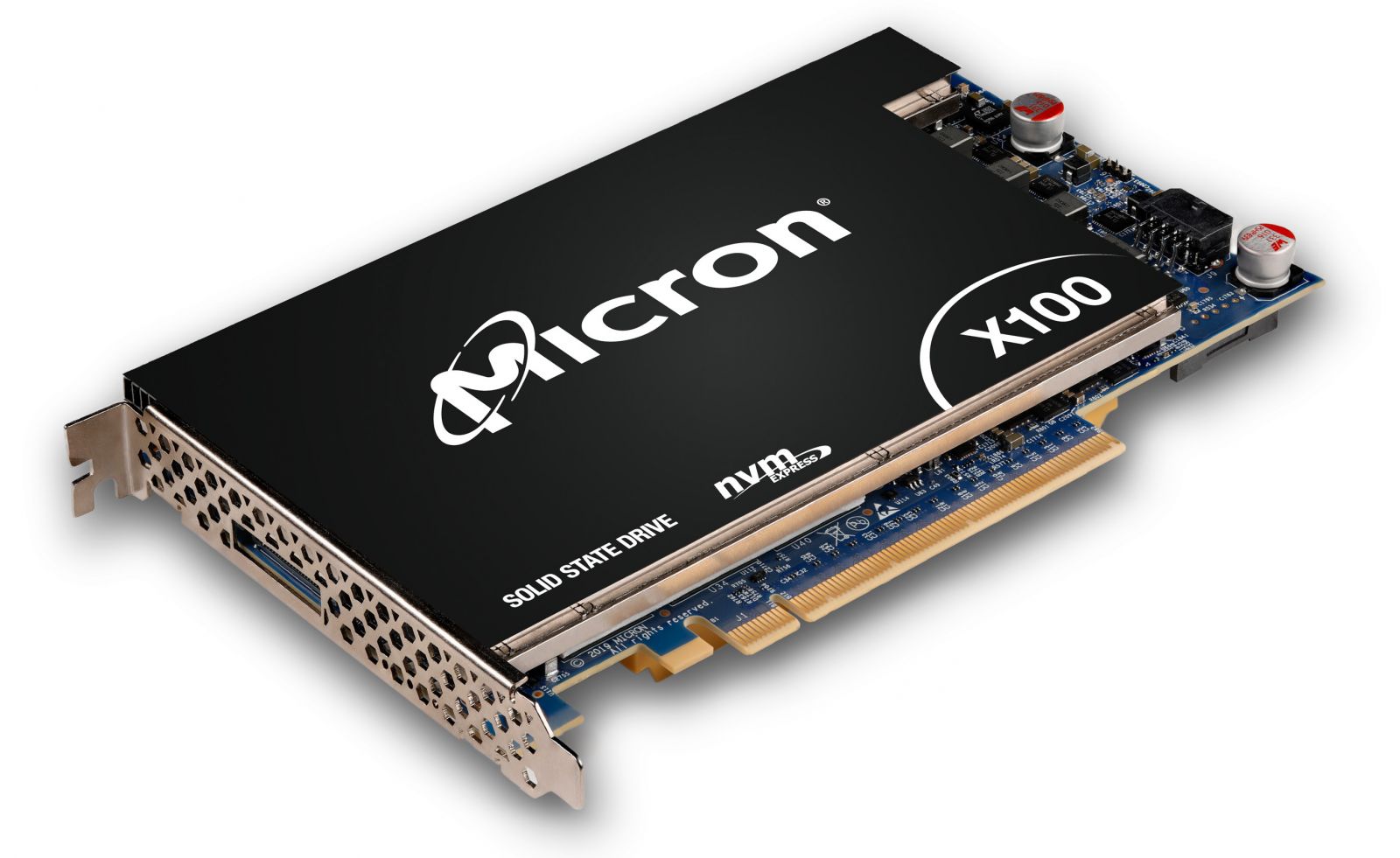
Micron released their fastest SSD to date today, the Micron X100. The X100 NVMe SSD is Micron’s first product in an all new family of high-performance memory solutions. This new solution features 3D XPoint technology which is innovative NVMe technology that adds a high-performance tier between DRAM and NAND. This breakthrough technology delivers up to 1,000x lower latency and 16x DRAM capacity with superior endurance over NAND. Benefits of the the X100 include high bandwidth, low latency, high quality of service (QoS), and high endurance. Ideal performance of the X100 can be seen in the use case of big data applications and transactional workloads.

3D XPoint (pronounced cross point) was jointly developed by Micron and Intel and was first announced in 2015. Intel’s version was dubbed Optane and has made a fairly significant impact on the market running near competitor free for some time now, though other companies have been dabbling in the persistent memory area. Micron and Intel went their separate ways in 2017 with Micron promising its own 3D Xpoint in both 2017 and 2018, initially named QuantX. It looks as though that name has been dropped but the day of the new persistent memory product is here in the form of the Micron X100 SSD. Aimed at the data center, features include:
- High-performance local storage — offers up to 2.5 million IOPs, Micron claims this is more than three times faster than today’s competitive SSD offerings
- High bandwidth — has more than 9GB/s bandwidth in read, write and mixed modes and is up to three times faster than today’s competitive NAND offerings, according to the company
- Ultralow latency — provides consistent read-write latency that is 11 times better than NAND SSDs
- Application acceleration — enables two to four times the improvements in end-user experience for various applications with prevalent data center workloads
- High-performance in small size storage — eliminates the need for overprovisioning storage for performance
- Ease of adoption — because the Micron X100 SSD uses the standard NVMe interface, requires no changes to software to receive the full benefits of the product
Availability
The Micron X100 SSD will be in limited sampling with select customers this quarter.
Sign up for the StorageReview newsletter
